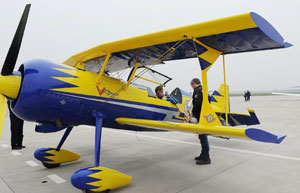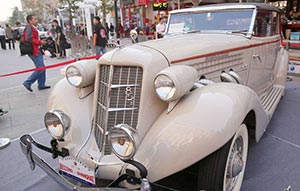

BEIJING -- China's Dalian Commodity Exchange on Friday will launch the country's first iron ore futures with physical delivery, to gain more pricing power on the commodity.
Chinese steel makers are the world's biggest iron ore buyers. Volatile iron ore prices have exposed steel makers to risks.
Chinese steel makers suffered losses from volatile iron ore prices and futures provide hedging tools for domestic steel makers and spot traders, said Zhang Yichen, an analyst with Yongan Futures Research Academy. The futures also help Chinese steel makers gain pricing power.
Physical delivery will be completed with imported iron ore powder which contains 62 percent iron as trading object, or both refined iron ore powder and iron ore concentrates with iron above 60 percent as replacements, said a statement on the bourse's website.
The trade will use stockpiles at ports including Tianjin, Lianyungang, Rizhao, Tangshan, Qingdao and Caofeidian, as well as stockpiles in some steel mills, the statement said.
The size of each lot will be 100 tons, have a daily trading limit of 4 percent and be denominated in yuan, the statement said.
Dalian, a seaside resort in Northeast China's Liaoning province, is home to one of China's four futures exchanges and mainly trades agricultural products. The securities regulator announced the plan on Oct 11 and the bourse confirmed on Oct 14.
Iron ore is the most important raw material for steel production, with Australia, China, Brazil and India accounting for around 80 percent of the world total output.
China is the world's second-largest iron ore producer. It reported 440 million tons in output, 740 million tons in imports and 1.05 billion tons in consumption last year.
Fierce competition
The three top iron ore miners, BHP Billiton, Vale and Rio Tinto, scrapped annual price talks in 2009 and turned to quarterly pricing and even shorter indices or spot pricing, pointing to huge hedging opportunities.
The Chicago Mercantile and Singapore ExchangEs have traded swap options since 2011; the Indian and Singapore Commodity Exchanges launched iron ore futures in 2011; the Chicago Mercantile Exchange launched them in 2013; the Intercontinental Exchange and the London Metal Exchange announced iron ore futures in 2013.
China's responses
Chinese steel makers have questioned use of the Platts index as a benchmark: 80 to 90 percent of the production of the three top iron ore producers follows the Platts index in pricing, and the index is based on the tender prices of the three major producers.
The transparency of Platts index has been widely questioned, and further research is needed to see whether it is manipulated, according to Wang Yingsheng, director of the China Iron and Steel Association Market Research Department.
Many Chinese producers believed the iron ore index futures rely too heavily on the index, leading to control by the mining companies over the market.
Physical delivery greatly reduces the chance for the major players to manipulate market. It brings futures closer to the spot price, and better reflects supply and demand in the spot market.
All the iron ore futures contracts in the global market are iron ore index futures, lacking support in spot markets.
China, as the world's largest iron ore importer, has great spot markets and can launch iron ore futures backed by physical delivery.
The iron ore contract widens China's already existing hedging tools consisting of rebar, coal and coke contracts.
China started its own spot trading platform in March last year.
 Aerobatic team prepare for Aviation Convention
Aerobatic team prepare for Aviation Convention
 China Suzhou Electronic Manufacturer Exposition kicks off
China Suzhou Electronic Manufacturer Exposition kicks off
 'Squid beauty' and her profitable BBQ store
'Squid beauty' and her profitable BBQ store
 A day in the life of a car model
A day in the life of a car model
 Vintage cars gather in downtown Beijing
Vintage cars gather in downtown Beijing
 Asia Bike Trade Show kicks off in Nanjing
Asia Bike Trade Show kicks off in Nanjing
 Student makes race car for 4th Formula SAE of China
Student makes race car for 4th Formula SAE of China
 Beijing suburb to hold 2014 APEC meeting
Beijing suburb to hold 2014 APEC meeting